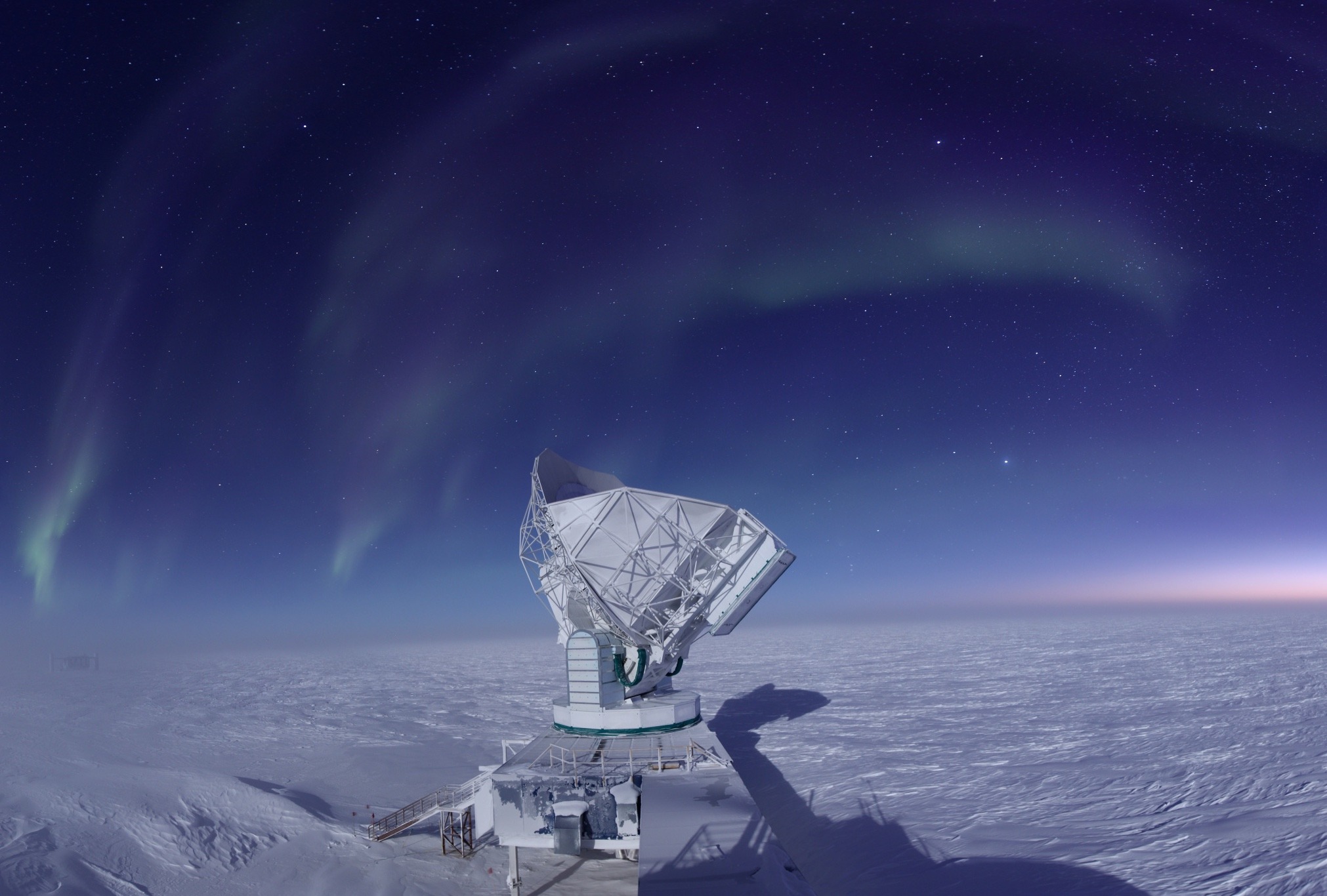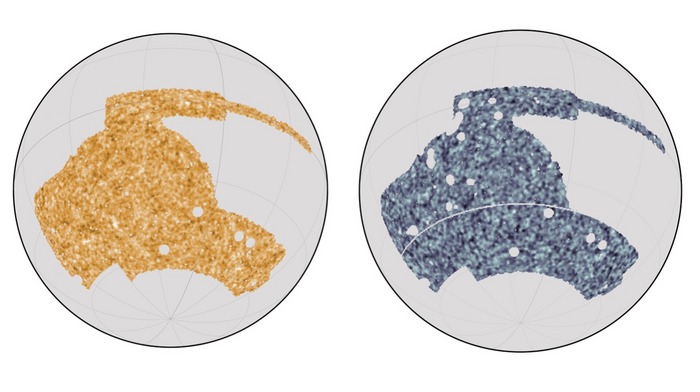The researchers used data from the Dark Energy Survey project and the South Pole telescope to compile the distribution and total amount of matter in the Universe. It was additionally confirmed that there was about six times more dark matter in the Universe than usual, which generally corresponded to preliminary measurements. But at the same time, the team found that the distribution of the two types of matter did not correspond to some cosmological models. This discovery is described in detail in three publications on Physical Review D.

Creating two maps of matter in the Universe
In the new study, astronomers used a map compiled by the South Pole telescope, which observed the Universe in the microwave range. In this spectrum, you can see the oldest radiation, which dates back to about the first 300 thousand years after the Big Bang. In turn, Dark Energy Survey uses optical range. Then the team superimposed the two resulting maps to understand the full picture of exactly how matter was distributed in the Universe.

“It seems that there are slightly fewer fluctuations in the modern Universe than we expected, assuming that our standard cosmological model is tied to the early Universe. The new results prove particularly strongly that we may be starting to detect holes in our standard cosmological model,” said Eric Baxter, an astronomer at the University of Hawaii and co-author of the study.

Mysterious dark matter and dark energy
Dark matter is a mysterious substance in the Universe that we cannot observe directly. It is not visible in any range of the spectrum, but scientists know about its existence because of the gravitational effect on ordinary matter. According to CERN, dark matter makes up about 27% of the Universe, while ordinary matter makes up about 5% of the total content of the Universe. The remaining 68% consists of dark energy – a hitherto undefined category, evenly distributed throughout the Universe and responsible for its accelerated expansion.
In 2021, the ALMA telescope helped scientists get a new accurate measurement of the age of the Universe: 13.77 billion years. Additional queries about the cosmic microwave background can also help researchers deal with the mismatch of the Hubble constant: depending on the measurements, researchers get two different figures for the rate of this expansion, which is an unsolved problem.
As the means of observation become more accurate and data is collected and analyzed, this information can be used in large cosmological models to determine where scientists have been wrong in the past and push them to new directions of research.
Earlier we reported on how the era of the expansion of the Universe was coming to an end.
Follow us on Twitter to get the most interesting space news in time
https://twitter.com/ust_magazine
